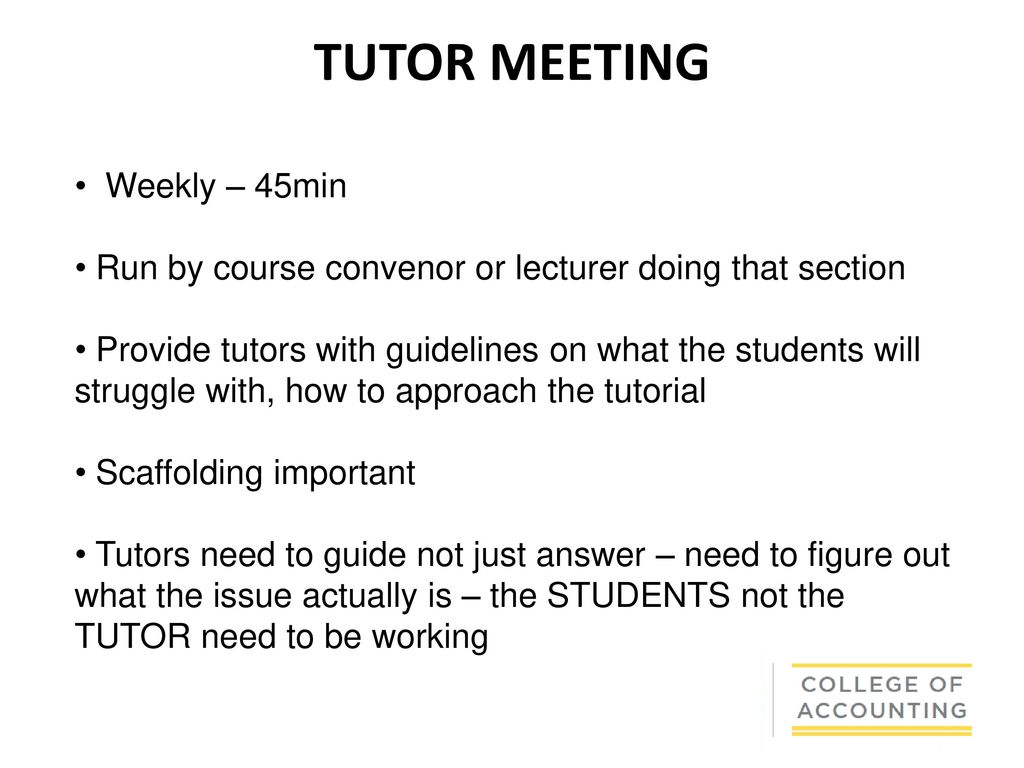Tutoring is a rewarding profession that bridges the gap between students’ academic needs and their potential. However, even the most skilled tutors face a range of challenges that can make their work difficult. From addressing diverse learning needs to managing time effectively, the struggles are real and varied. Understanding these challenges is the first step toward finding practical solutions.
Managing Diverse Student Needs
One of the most significant challenges tutors face is addressing the diverse needs of their students. Students come from various educational backgrounds, with different levels of understanding and unique learning styles. A tutor may find themselves teaching a high school student struggling with basic algebra in one session and, in the next, guiding a college student through advanced calculus.
Key Challenges in Managing Student Needs:
- Varying Academic Levels: Tutors often work with students whose knowledge gaps span several years, making it difficult to align the content to their level.
- Different Learning Styles: While some students excel with visual aids, others might benefit more from hands-on problem-solving or auditory explanations.
- Special Educational Needs (SEN): Students with learning disabilities, such as ADHD or dyslexia, may require tailored approaches that demand extra time and specialized techniques.
Strategies for Success:
- Assess Initial Knowledge: Begin every tutoring engagement with a diagnostic test to determine the student’s current level and areas of improvement.
- Use Personalized Teaching Methods: Adapt your teaching style to fit the student’s needs—be it using diagrams for visual learners or step-by-step walkthroughs for kinesthetic learners.
- Set Realistic Goals: Break down complex topics into manageable objectives to build the student’s confidence over time.
- Leverage Technology: Utilize tools like Quizlet, Khan Academy, or Google Classroom to diversify learning materials and cater to different needs.
Case Study:
A tutor working with a high school student who had a learning disability found success by incorporating games and visuals into sessions. By using flashcards, storyboards, and real-life examples, the tutor was able to make abstract concepts more tangible, leading to measurable improvements in the student’s understanding.
Keeping Students Engaged
In a world filled with distractions, keeping students focused during a tutoring session can be an uphill battle. Engagement is the cornerstone of effective learning, yet many tutors struggle to hold their students’ attention, especially in longer sessions or with younger learners.
Common Engagement Obstacles:
- Short Attention Spans: Younger students or those uninterested in a subject may struggle to stay focused for the duration of a session.
- External Distractions: Phones, social media, or even a noisy environment can pull students’ attention away.
- Monotony in Teaching: Repetitive teaching methods can lead to disinterest, making it harder for students to absorb information.
Proven Methods to Boost Engagement:
- Incorporate Interactive Activities: Use games, quizzes, and group problem-solving exercises to make learning fun and dynamic.
- Set Short-Term Milestones: Break the session into smaller segments with clear goals to give students a sense of accomplishment.
- Use Real-Life Examples: Relating topics to the student’s interests or real-world scenarios can make lessons more relatable.
- Encourage Active Participation: Ask open-ended questions, prompt discussions, and involve students in the teaching process to keep their minds active.
Data Insight:
A study from the Journal of Educational Psychology found that students engaged in interactive learning activities retained 30% more information than those in traditional lecture-style sessions.

Time Management and Scheduling
Time management is one of the most critical struggles tutors face, especially when balancing multiple students and their unique needs. Juggling lesson preparation, teaching sessions, and administrative tasks can quickly become overwhelming without a clear strategy.
Challenges in Managing Time:
- Overbooking or Double-Booking: Tutors often try to maximize their schedule, leading to conflicts or insufficient preparation time.
- Session Preparation: Developing personalized lesson plans for each student takes considerable effort and can be time-consuming.
- Balancing Personal and Professional Life: Without boundaries, the line between work and personal life blurs, leading to stress and inefficiency.
Effective Time Management Tips:
- Use a Scheduling Tool: Apps like Google Calendar, Calendly, or Acuity Scheduling can help organize your day and avoid conflicts.
- Block Dedicated Planning Time: Set aside specific hours each week for lesson preparation to ensure you are fully prepared.
- Prioritize Tasks: Focus on high-impact activities such as designing engaging lessons and assessing progress, rather than administrative busywork.
- Limit the Number of Students: Know your limits and avoid overbooking sessions. Quality always trumps quantity.
- Batch Similar Tasks: Prepare materials for multiple students studying similar topics to save time and energy.
Example of a Balanced Weekly Schedule:
| Time Block | Activity | Notes |
|---|---|---|
| 8:00 AM – 9:00 AM | Lesson Planning | Focus on upcoming sessions. |
| 9:30 AM – 11:30 AM | Tutoring Sessions | Back-to-back sessions for focus. |
| 12:00 PM – 1:00 PM | Lunch and Break | Prevent burnout. |
| 1:30 PM – 3:00 PM | Student Assessment Reviews | Analyze progress and feedback. |
| 3:30 PM – 5:30 PM | Tutoring Sessions | Afternoon learning blocks. |
| 6:00 PM – 7:00 PM | Relaxation or Hobbies | Ensure work-life balance. |
Case Study:
A part-time tutor teaching five students per week found themselves constantly underprepared. By implementing a detailed weekly schedule and using lesson plan templates, they reduced prep time by 40% and improved session quality.
Adapting to Different Learning Styles
Every student learns differently, and tutors must adapt their teaching approaches to ensure effective communication and understanding. Ignoring individual learning preferences can lead to frustration for both the tutor and the student.
Learning Styles and Their Characteristics:
| Learning Style | Key Characteristics | Tutoring Strategies |
|---|---|---|
| Visual Learners | Prefer diagrams, charts, and images. | Use infographics, flowcharts, and videos. |
| Auditory Learners | Learn best through listening and verbal instructions. | Explain concepts aloud, use storytelling. |
| Kinesthetic Learners | Benefit from hands-on activities and movement. | Incorporate experiments, manipulatives, or role-play. |
How Tutors Can Adapt:
- Identify the Student’s Style Early: Use questionnaires or observe their response to various activities during the initial sessions.
- Incorporate Multi-Sensory Techniques: Combine visual, auditory, and kinesthetic elements to cater to multiple learning preferences simultaneously.
- Be Flexible: Switch teaching styles if one approach isn’t resonating with the student.
- Leverage Technology: Tools like mind-mapping software or audio recordings can supplement traditional teaching methods.
Fact:
According to a report by the National Institute for Learning Development, students perform up to 75% better when their individual learning styles are taken into account.

Maintaining Motivation and Preventing Burnout
Tutoring, while fulfilling, can be emotionally and mentally draining. The pressure to meet student expectations, coupled with long hours and preparation, can lead to fatigue and burnout if not managed effectively.
Challenges with Motivation and Burnout:
- Emotional Investment: Tutors often become deeply invested in their students’ success, which can lead to stress when progress is slow.
- Lack of Downtime: Constantly juggling sessions, preparation, and personal life can leave little room for relaxation.
- Repetitive Work: Teaching similar topics repeatedly without variety can reduce enthusiasm over time.
Tips for Staying Motivated and Avoiding Burnout:
- Set Clear Boundaries: Establish specific work hours and communicate them to clients. This helps maintain a healthy work-life balance.
- Celebrate Small Wins: Acknowledge and appreciate small milestones achieved by your students to remind yourself of the impact you’re making.
- Take Regular Breaks: Schedule downtime between sessions and dedicate time to hobbies or activities that recharge you.
- Join a Support Network: Engage with fellow tutors to share experiences, advice, and encouragement.
- Pursue Professional Growth: Take courses or attend workshops to keep your teaching methods fresh and interesting.
Practical Self-Care Strategies:
- Mindfulness Practices: Incorporate meditation or breathing exercises to reduce stress.
- Exercise Regularly: Physical activity improves mental health and energy levels.
- Plan Vacation Time: Periodic breaks from tutoring provide much-needed rest and help prevent long-term burnout.
Case Study:
A full-time tutor handling 20 sessions per week found themselves losing enthusiasm for the work. By setting a cap on the number of weekly sessions, joining a local tutor support group, and scheduling monthly wellness days, they regained their passion and improved their productivity.
Signs of Burnout to Watch For:
- Chronic fatigue or exhaustion.
- Increased frustration or irritability.
- Lack of enthusiasm for teaching.
- Difficulty concentrating or preparing for sessions.
Data Insight:
A survey by the Tutor’s Association revealed that 63% of tutors reported feeling overwhelmed at some point in their careers, highlighting the importance of addressing mental health and well-being.
Navigating Remote Tutoring
Technical Issues and Online Platforms
With the rise of remote learning, online tutoring has become more common, but it brings its own set of challenges. Technical issues, unfamiliarity with platforms, and the lack of physical presence can hinder effective teaching.
Common Technical Challenges:
- Unstable Internet Connections: Dropped calls or lag during sessions can disrupt the flow of teaching.
- Platform Limitations: Some tutoring platforms lack the interactive features necessary for engaging lessons.
- Hardware Issues: Outdated or malfunctioning devices can impact session quality.
Solutions for Overcoming Technical Struggles:
- Invest in Reliable Technology: Use high-speed internet and modern devices to minimize disruptions.
- Choose the Right Platform: Opt for tutoring tools like Zoom, Microsoft Teams, or specialized platforms like TutorMe or Wyzant, which offer interactive features like whiteboards and screen sharing.
- Have a Backup Plan: Prepare alternative methods for communication (e.g., phone calls or email) in case of technical failures.
- Test Before Sessions: Always check your internet connection, camera, and microphone before starting a session.
Pro Tip:
Encourage students to perform similar checks on their end to ensure smooth communication during lessons.
Case Study: Adapting to Remote Tutoring
A tutor transitioning to online teaching struggled with frequent disruptions during sessions. By upgrading to a dual-monitor setup, subscribing to a higher-tier internet plan, and using an interactive platform with annotation tools, they enhanced their remote tutoring effectiveness.

Building Rapport Virtually
Building a strong connection with students is crucial for successful tutoring, but doing so in a virtual environment presents unique challenges. Without the physical presence of a tutor, creating trust and fostering engagement can feel impersonal.
Challenges in Building Virtual Rapport:
- Limited Non-Verbal Communication: Tutors cannot rely on body language or physical cues to gauge a student’s understanding or emotional state.
- Initial Awkwardness: Starting a session with a new student online can feel less natural than in-person meetings.
- Lack of Personal Interaction: Virtual settings can create a barrier that makes it harder to establish a genuine connection.
Strategies for Building Rapport Online:
- Start with an Icebreaker: Begin sessions with a lighthearted question or activity to make students feel comfortable.
- Show Empathy and Patience: Actively listen to students’ concerns and validate their feelings to build trust.
- Maintain Eye Contact: Look directly at the camera to mimic face-to-face engagement.
- Use the Student’s Name Often: Personalize interactions to make students feel valued.
- Set a Friendly Tone: Use humor and encouragement to make the virtual environment welcoming.
Techniques to Foster a Strong Connection:
- Share Screens and Work Collaboratively: This creates a sense of teamwork.
- Personalize Lessons: Incorporate the student’s interests into your teaching material.
- Provide Regular Feedback: Constructive, timely feedback helps build confidence and shows that you’re invested in their success.
Case Study:
A tutor working with a shy middle school student found it challenging to build a connection online. By starting each session with casual chats about the student’s favorite video games and incorporating game-related examples into math problems, the tutor successfully built rapport and increased the student’s participation.
Tools to Enhance Virtual Engagement:
| Tool | Purpose | Features |
|---|---|---|
| Zoom | Video conferencing | Screen sharing, breakout rooms, annotation. |
| Kahoot | Interactive quizzes and games | Customizable quizzes for learning engagement. |
| Padlet | Collaborative whiteboard | Brainstorming and idea-sharing. |
Fact:
Research by EdTech Magazine shows that virtual learning environments with interactive elements result in a 20% increase in student participation compared to static, lecture-based approaches.
Ensuring Student Accountability Online
Accountability can be more difficult to establish in a virtual environment. Without direct supervision, students may become less motivated or procrastinate on assigned tasks, leading to slower progress.
Challenges with Online Accountability:
- Lack of Structure: Students may struggle to prioritize tutoring assignments when outside the traditional classroom environment.
- Distractions at Home: Household distractions can interfere with a student’s focus and commitment.
- Limited Oversight: Tutors cannot physically monitor a student’s actions during online sessions.
Strategies for Promoting Accountability:
- Set Clear Expectations: Define goals and assignments at the beginning of each session.
- Use Checklists and Progress Trackers: Share digital checklists to help students stay on track.
- Establish Regular Check-Ins: Dedicate time to review completed tasks and address challenges.
- Reward Progress: Offer positive reinforcement, such as praise or small rewards, for milestones achieved.
Case Study:
A high school tutor noticed that one of their students frequently skipped homework in an online setting. By introducing a shared Google Doc to track assignments and progress, the tutor increased the student’s accountability and helped them stay organized.
Data Insight:
A study from the Online Learning Journal found that students who were required to submit weekly progress updates showed a 25% improvement in overall performance compared to those without accountability measures.